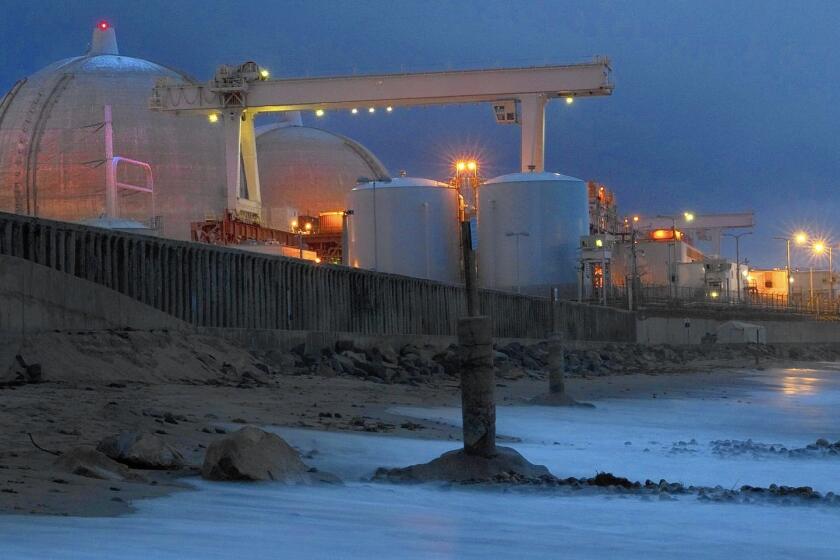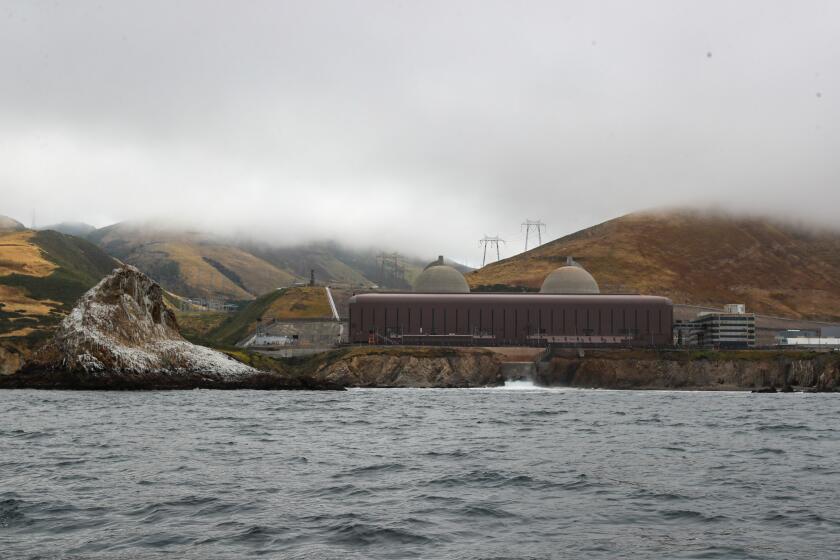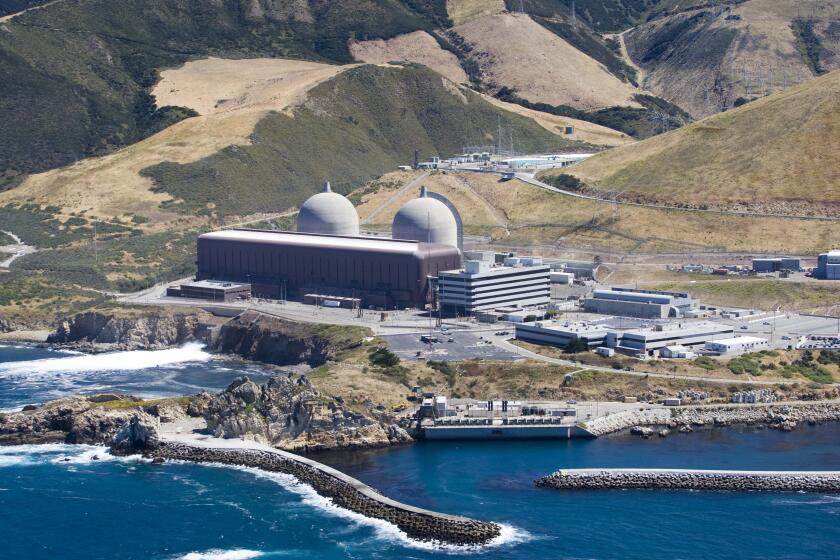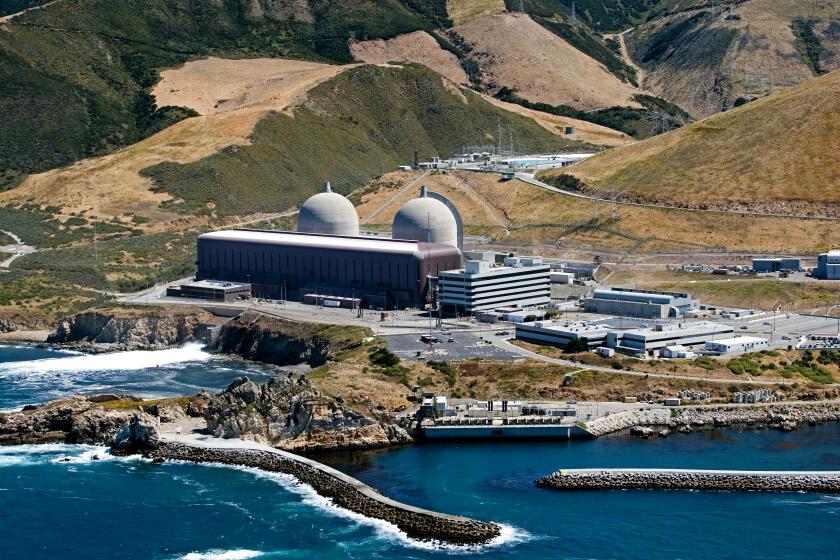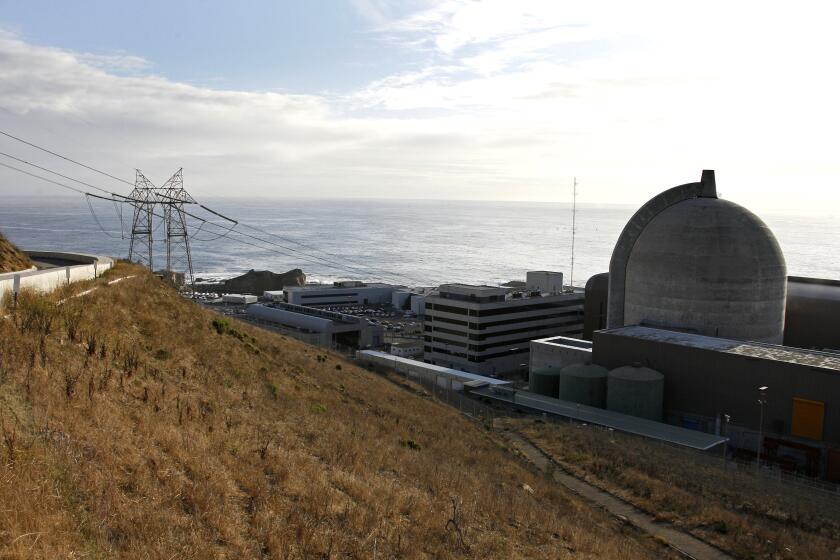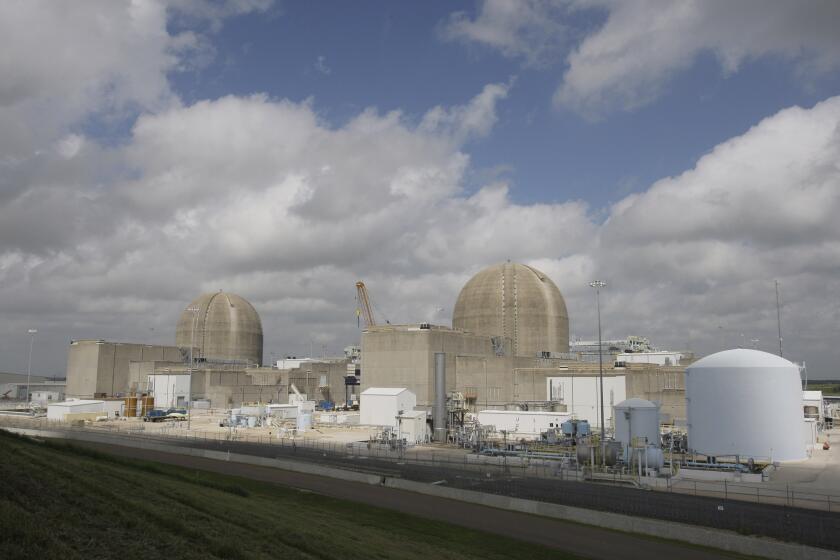Column: Nuclear power could save our air quality. At what cost to the water?
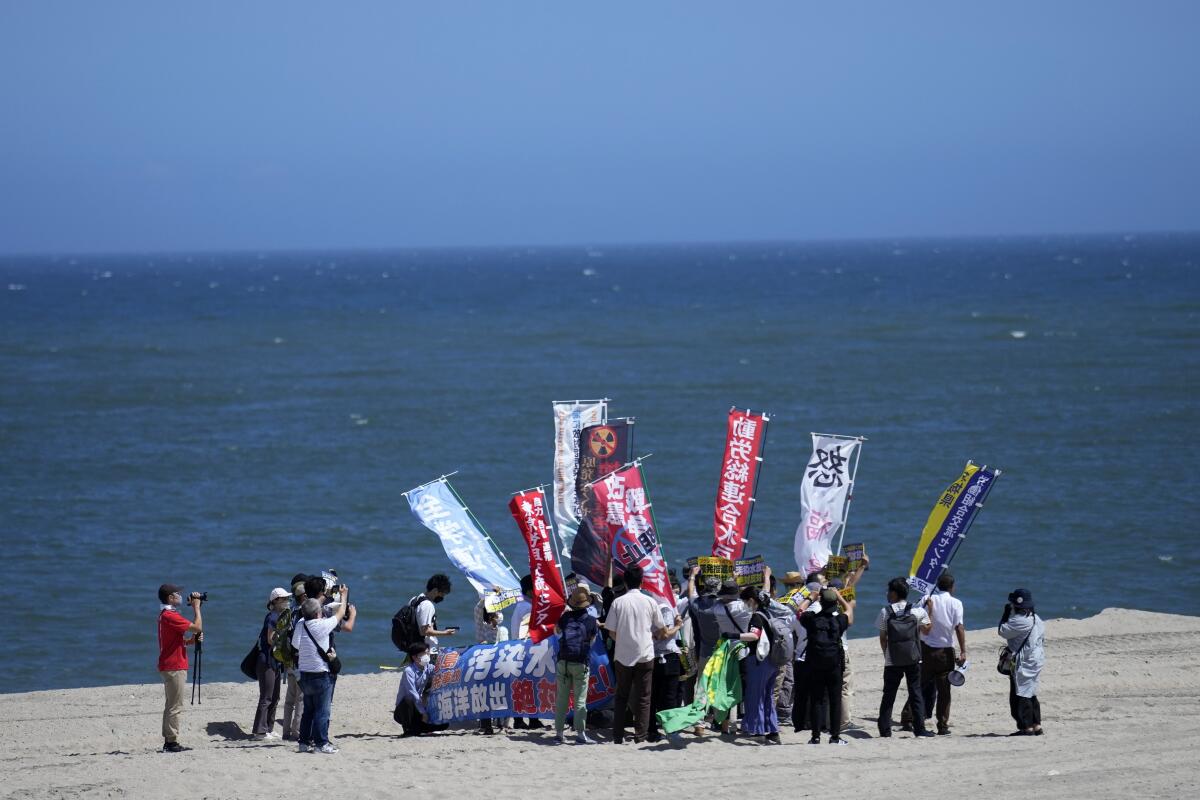
- Share via
You know it was a remarkable week when dumping tons of radioactive water into the Pacific Ocean wasn’t even the lead story.
That’s right: While much of the globe’s attention was on the former American president’s legal battles and the mug shot seen around the world, Japan started its 30-year plan to release the diluted yet still contaminated water that was stored at the now defunct Fukushima Daiichi nuclear power plant. Back in 2011, the most powerful earthquake in Japan’s recorded history led to a devastating tsunami and the worst nuclear accident since Chernobyl. Damage to the plant led to radiation of a huge volume of water, which the facility has been storing ever since.
Opinion Columnist
LZ Granderson
LZ Granderson writes about culture, politics, sports and navigating life in America.
After two years of research, and the blessings of the International Atomic Energy Agency, authorities are slowly releasing the heavily treated water into the ocean because … well, because Japan is running out of room.
The folks behind this plan will tell you that this shouldn’t scare people as much as it does.
Closing the San Onofre nuclear plant didn’t end its threat since nuclear waste is stored at the facility, which sits on an erosion-prone bluff.
And yet. The prospect of releasing radioactive water into the ocean should scare people more than a little.
Anyone trying to persuade us otherwise is preying on our flawed old thinking about water and the ocean — that they’re infinite and unchanging.
The Diablo Canyon nuclear plant wreaks havoc on marine life, says a solar power advocate. Another reader favors nuclear over solar.
Like Japan, Canada has struggled to store radiated water that’s a byproduct of nuclear reactions. A power plant company in Canada wants to store waste from its reactors within half a mile of one of the Great Lakes. Yes, those Great Lakes. The ones that make up more than 20% of the world’s fresh water. The ones that provide drinking water for 30% of Canadians and 10% of Americans.
Since the 1980s, nations have been trying to figure out what to do with nuclear waste. Burying barrels of it under a mountain in Nevada was never going to be a sustainable plan. Shelving the stuff at former plants like California’s San Onofre — down the coast from San Clemente — isn’t much better. The alternatives get pretty wild. There’s even a technique to turn it into glass.
Newsom wants to give PG&E $1.4 billion to run Diablo Canyon another decade. Show us how that will transition to renewable energy and prevent blackouts.
But who seriously had “store it next to drinking water” on their nuclear-waste bingo card?
Burning fossil fuels sends carbon dioxide into the air, contributing to global warming. Last month was the hottest July on record. August hasn’t been much of a reprieve, particularly in the southwest corner of the country. Nuclear power advocates would say now’s the time to move aggressively to nuclear, which doesn’t add to greenhouse gas emissions.
Diablo Canyon accounts for 15% of California’s carbon-free electricity. If it shuts down in 2025 as scheduled, carbon emissions will increase despite more solar and wind power.
There are roughly 440 operating nuclear reactors in 32 countries, with upwards of 60 more currently under construction. That may be good news for air quality. Unfortunately, the water we drink is now, frighteningly, up for discussion.
Canada’s prime minister, Justin Trudeau, has prioritized nuclear over oil and gas. About 15% of his nation’s electricity comes from nuclear, and he intends to increase production. Struggles between our two nations regarding storing nuclear waste are not new, but we generally have managed to cooperate over the years. The talk of storing contaminated water near Lake Huron — near Flint, Mich., of all places — will test that. Trudeau is expected to make a decision on the waste next year.
The impending closure of Diablo Canyon shows the need for California to double down on renewable energy and accelerate the transition.
Which brings me back to Japan. No one’s drinking that ocean water, but the sea does feed billions of people. In response to the decision to dump radioactive water, China has already banned all Japanese seafood imports, a crushing blow given it’s one of Japan’s top seafood export destinations. The statement released by the government read in part that “by dumping the water into the ocean, Japan is spreading the risks to the rest of the world and passing an open wound onto the future generations of humanity.” Quite rich given China’s environmental record.
The U.S. Food and Drug Administration has been testing products from the Fukushima area and last month reported “none of these samples contained detectable levels of Cesium.” Yet, 90% of area residents are still concerned about the effects releasing the contaminated water will have on fishing.
Compared to other power sources, nuclear energy is extremely safe. It’s also emissions-free, so why are we rushing to close California’s last plant?
There’s no reason to think the consequences of dumping would be only local or only short-term.
The Tohoku earthquake and subsequent tsunami led to 5 million tons of debris being dumped into the Pacific in 2011. Most of it landed at the bottom, but some of it reached our shores. Over the years, even refrigerators made the journey from Japan to the West Coast.
Why further normalize the polluting of the planet’s oceans? Or the contamination of Michigan drinking water?
There is no workable path to addressing global warming that does not include a substantial role for nuclear power.
Scientists have offered assurance that properly treated radioactive water will have only negligible effects when further diluted in the ocean. But experts also assured us that the Fukushima power plant was safe, until it wasn’t. The reason Japan is in this situation, with vast volumes of radiated waste to purge, is that life doesn’t happen in a controlled environment.
I hope Trudeau remembers that as he’s weighing the options for Canada’s toxic waste.
More to Read
A cure for the common opinion
Get thought-provoking perspectives with our weekly newsletter.
You may occasionally receive promotional content from the Los Angeles Times.

